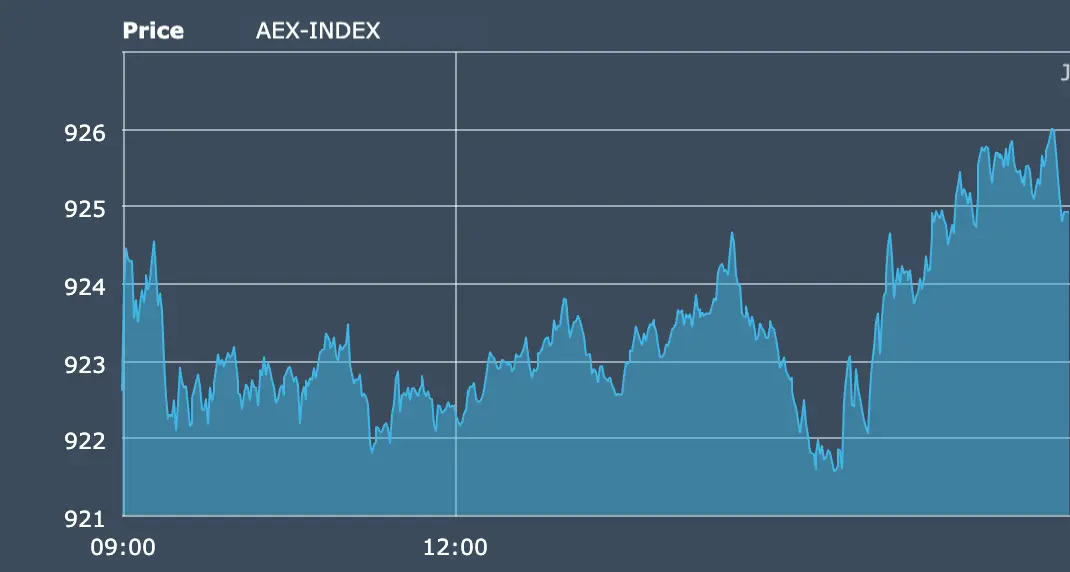A Quarter Percent Climb Amid Global Convulsions
Amsterdam's AEX Index closed today, 16 June 2025, at 924.93, recording a daily gain of +2.31 points (+0.25%). A statistical whisper, barely audible over the roar of geopolitical disorder. The Dutch market exhaled a quiet breath, measured, perhaps sedated, not because the world is stable, but because it is waiting to see which fuse burns faster: economic inertia or global unrest.

Movement and Meaning
A 0.25% gain should suggest serenity. But in context, it reads more like anesthetic. Beneath the smoothness of today’s curve lies a suppressed anxiety. This wasn’t optimism, it was postponement. Equities held their line not because fundamentals improved, but because capital has nowhere better to hide.
Tech stayed afloat, mostly due to the inertia of semi-monopolistic confidence. Financials were tentative, mirroring central banks that are too slow to speak and too cautious to move. Energy ticked slightly upward on oil pricing speculation, but not enough to signify conviction. In short: the AEX mirrored a Europe that knows the storm is circling, but hasn't yet chosen whether to open the umbrella or keep sipping espresso.
What to Pay Attention To
Three geopolitical flashpoints cast long shadows across today’s session:
- The Middle East Escalation: With last night's confirmed cross-border bombardments between Iran and Israel, targeting logistical installations and provoking reciprocal strikes, the region inches closer to systemic destabilization. While oil futures have not yet exploded, they are on a slow boil. The market is pricing in controlled chaos, but the risk of kinetic spillover into trade routes or broader military alliances remains underweighted.
- American Civil Agitation: In the U.S., riot-led curfews and massive public marches, triggered by alleged judicial corruption and police overreach, have entered their third week. Washington’s paralysis feeds into investor uncertainty, particularly around fiscal continuity and debt negotiations. U.S. consumer confidence, long the backbone of transatlantic optimism, is now under ideological siege. Europe cannot stay neutral in this tremor.
- Currency and Flight to ‘Stability’: The euro remains curiously stable, despite this storm. Why? Because no one wants to bet on anything else. This isn’t strength, it’s survival by default. And the Dutch economy, deeply exposed to trade, logistics, and regulatory reliability, now functions like a lighthouse on a cliff that may soon crack.
Message for Dutch Entrepreneurs and SMEs
This is not a time to interpret market calm as market clarity. For micro and small Dutch enterprises, today’s AEX uptick offers zero actionable relief. If you’re in logistics, export, tech integration, or manufacturing, your real variables are not stock prices—they’re currency volatility, insurance cost spikes, and unstable procurement paths.
Now is the time to revisit your supplier geography, your pricing elasticity, and your contractual assumptions about stability. Governance is no longer a theoretical shield, it is the only firewall between continuity and collapse. Waiting for governments to act is no longer viable. Build your own risk protocols.
Closing Reflection
In a world where bombs fall, courts riot, and markets smile, ethics must become a form of rebellion. Don't confuse silence with certainty. When the system wears a crisp suit while the world burns, true leadership is found not in forecasts, but in the courage to prepare, speak, and adapt before the numbers tell you to.
Co-Founder of Xtroverso | Head of Global GRC
Paolo Maria Pavan is het structurele brein achter Xtroverso, waar hij compliance-expertise combineert met ondernemende vooruitziendheid. Hij observeert markten niet als een handelaar, maar als een patroonlezer—die gedrag, risico’s en verstoringen volgt om ethische transformatie te sturen. Zijn werk daagt conventies uit en herdefinieert governance als een kracht voor helderheid, vertrouwen en evolutie.
